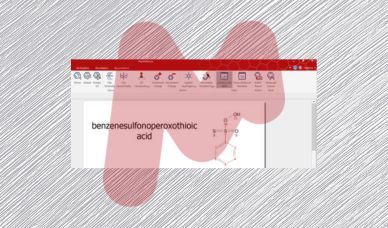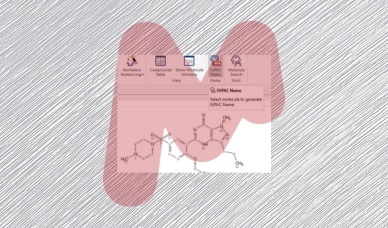Mnova IUPAC Name algorithm – Part III
Our current achievement is generating of Preferred IUPAC Names (PIN) for
- unbranched rings assemblies of 3 through 6 identical cyclic systems
- branched rings assemblies.
For rings assemblies of 3 through 6 identical cyclic systems IUPAC recommends new numbering system. The new system composed of primary and composite locants, where primary locant indicates the position of cyclic system in assembly and composite locant is the locant inside this system.
PIN for the molecule above is 11,21:23,31-terphenyl
The old name 1,1′:3′,1”-terphenyl is also acceptable but not the preferred one.
Preferred IUPAC names for branched ring assemblies are forming by substituting into the longest unbranched assembly.
If necessary, the criteria for selecting the principal chain are:
- the longest chain
- the maximum number of substituents
- the lowest locants for substituents as set
- hen alphanumerical order
(According the page 347 of IUPAC Blue Book 2013)
For instance, for this molecule PIN is 23-cyclopropyl-11,21:22,31-tercyclopropane
But name 3′-cyclopropyl-1,1′:2′,1”-tercyclopropane is also acceptable.
The table below contains names of several assemblies generated by MestreLab/Name, and the other 3 applications. The correct IUPAC names are bolded, acceptable names highlighted with italic. Their correctness is checked according to IUPAC Blue Book 2013 (Nomenclature of Organic Chemistry. IUPAC Recommendations and Preferred Names 2013), pages 348-349,389.
You can also read previous articles on Mnova IUPAC Name algorithm:
Mnova IUPAC Name algorithm Part I
Mnova IUPAC Name algorithm Part II





